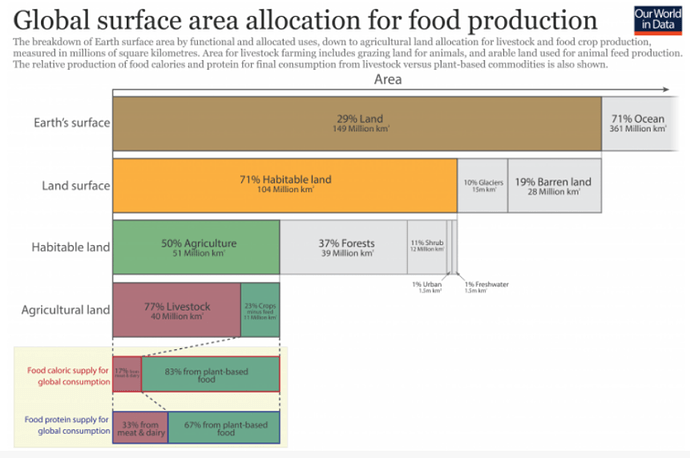The concern with GMOs is often confused about the detail. Yes, humans have been selectively breeding, and grafting, plants since the dawn of time. This is, even with the hard-hack of grafting, still something that you might say requires the agreement of the plant itself. It doesn’t always work, or as fast or in the way planned. But, even when it does, we are still talking about factors that were inherent to the plant(s) themselves, simply being emphasized or de-emphasized.
GMO is the ability to gene splice proteins from an eggplant, a crawfish, a soybean, a wheat stalk, a walnut, a bit of a novel fungi or mold, and a few other things you’d never even imagine, and force them into a manmade mutant plant that you might end up eating.
The problem is not that you might be eating the protein of a soybean. It is that the proteins resulting from this mutant combination are utterly novel on planet earth. It’s not merely that the human body has zero experience with them, the entire planet has zero experience with them.
Anybody aware of how many people react to modern wheat gliadan, or even peanuts, ought to have some idea where this is heading. Anybody who has seen how plants grown outside their natural habitat, like Kudzu, behave, ought to have some idea where this is heading. Combine all those things at once, and now imagine that is inside the human body, which suddenly has no freakin idea what to do with this bizarre thing it has never experienced before.
Some GMO changes are incredibly tiny and mild. They are less change than even typical plant breeding. And some are a combination that is so frankenstein it would bring you horror to imagine even doing it let alone someone eating the result. “Novel proteins” are a serious danger to the food supply. And of course like everything else Monsanto, much like a lot of pharma, there is no decent research/testing on this and what does exist is ‘proprietary’ and from the hands of those making it, so inherently untrustworthy without truly-independent third party study as well.
A lot of the most “modified” plants like corn, contains “novel proteins” which are pointedly deadly to insects. They are allegedly not harmful at all to animals or humans. … the research that would likely need to happen to truly evidence this would likely take a decade or more and is likely never gonna happen in a way that it would be seen anyway. Any gradual animal response wouldn’t matter as they are killed for food too soon. Human response that is gradual would just likely be growing inflammation. There’s so much of that in our society, contributing to every form of illness, there’d be no way to separate it from other things.
 )
)

 I like it. Good post, PJ.
I like it. Good post, PJ.